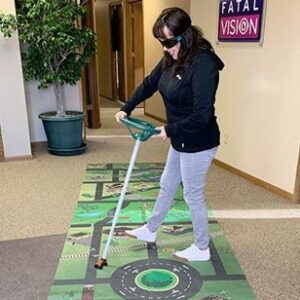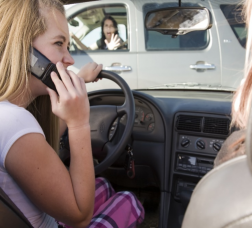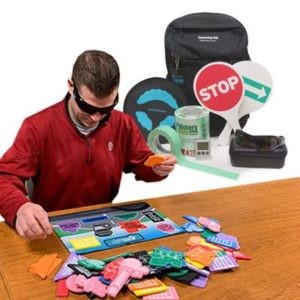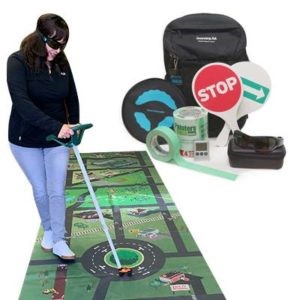 Between early morning classes, busy days full of extracurriculars, social activities, or work, and late nights studying, there are many reasons why teenagers are chronically sleep-deprived and at a higher risk of drowsy driving. Combined with their limited experience behind the wheel, drowsy teen drivers can pose a threat to themselves and others on the road.
Between early morning classes, busy days full of extracurriculars, social activities, or work, and late nights studying, there are many reasons why teenagers are chronically sleep-deprived and at a higher risk of drowsy driving. Combined with their limited experience behind the wheel, drowsy teen drivers can pose a threat to themselves and others on the road.
The effects of fatigue, including impaired cognition and performance, can be downright deadly when someone tired or sleepy gets behind the wheel. Drowsy drivers have a more difficult time paying attention to the road, have a slower reaction time when they need to brake or steer suddenly, and have a more challenging time making smart decisions.
According to the National Highway Traffic Safety Administration (NHTSA), drowsy driving caused 91,000 crashes in 2017, killing 800 people. Younger drivers account for many of those crashes. The AAA Foundation for Traffic Safety estimates drivers ages 16 to 24 were nearly twice as likely to be involved in a drowsy driving crash than drivers ages 40 to 59.
Despite this, traditional driver safety education often focuses more on the dangers of texting and driving or driving while under the influence of alcohol and drugs, rather than drowsy driving prevention.
Fortunately, Innocorp has developed plenty of drowsy driving prevention tools to help raise awareness and reduce crashes and deaths, including:
Read on to learn more about our drowsy driving prevention tools and resources.
What does it look and feel like to get behind the wheel when sleepy? A drowsy driving simulator delivers an authentic driving experience where participants can experience firsthand the dangers of drowsy driving in a safe and educational environment.
You can choose from two types of distracted and drowsy driving simulators:
When used with Innoocorp’s Drowsy and Distracted Goggles, drivers experience just how difficult it is to drive safely when feeling fatigued. In Drowsy mode, the Goggles block out vision for longer and longer periods to simulate real-life micro-sleeps that build in waves until the eyes and brain shut down.
Innocorp offers multiple Drowsy and Distracted goggle kits that can help enrich your drowsy driving prevention programs with hands-on, interactive experiences. Our simulation goggles are controlled through Bluetooth via a mobile app on your phone, or manually through the goggle, to provide the wearer with a safe way to experience how it feels to drive while drowsy or distracted.
You can also pair the goggles with other products to further enhance your drowsy driving prevention program, such as the DIES® Distracted Driving Activity Mat and Distract-a-Match®.
The DIES® Distracted Driving Activity Mat allows participants to “drive” through a simulated town using a special steering wheel and see how dangerous drowsy or distracted driving can really be in a safe, hands-on way.
With Distract-a-Match®, participants can experience various forms of distraction including visual (texting or taking a drink), manual (adjusting the radio station or putting on makeup), and cognitive (talking to other people in the car or experiencing intense emotions). Through a simple timed puzzle activity, program participants will experience how distractions can negatively impact their reaction times and abilities.
M.E.T.H.O.D.® (Mind Eyes Two Hands On Driving) is a step-by-step distracted and drowsy driving prevention framework that can help you design and build an evidence-based, peer-led program to promote distraction-free driving. This three-part training series engages and guides student peer leaders (grades 9-12) to address the issue of distracted and drowsy driving in their community. Students will learn to help their peers stay focused on the road with engaging and interactive activities and examples.
By placing teen drivers into five different scenarios, Change Blindness teaches participants how easy it is to get distracted or not realize they are drowsy driving and offers strategies to maintain focus. The interactive distracted driving media program uses the “S.E.E. Strategy” to reinforce safe driving skills and reduce the risks associated with distracted driving. Use this program virtually if your program has shifted to remote learning due to COVID-19.
These drowsy driving prevention resources can make a big difference in helping educate about the unknown dangers of drowsy driving and lower the risk of crashes, especially among teen drivers. Contact us online or call 800.272.5023 today to start exploring your options for enhancing your drowsy driving prevention educational program.
5 Benefits of Using Distracted Driving Simulators
To effectively teach at-risk populations about safe driving, engaging educational tools and activities can make a life-changing difference. Our distracted driving simulators are the perfect tool to accomplish this task for your teen driving safety program.
 Drowsy Driving Prevention Facts and Resources
Drowsy Driving Prevention Facts and Resources
Fatigue impacts us all at one time or another and in different ways. Fatigue can also lead to deadly consequences on the road.
7 Top Tools for Distracted & Drowsy Driving Prevention
With over twenty years of experience, we have a full lineup of distracted and drowsy driving tools that can be a game-changer in your awareness and prevention program.